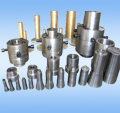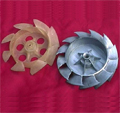

| Address: | PDS Enterprise Inc. 1650 West Artesia Blvd, Suite 278 Gardena, CA90248 |
| Phone: | 1-843-408-0142 |
| Email: | pdsenterprise@gmail.com sales@coolprototyping.com |


Home>Glossary
276. The Value of DOE in Plastic Molding
DOE or design of experiments (sometimes called innovative design) can be a powerful tool for any molder to have in his or her arsenal. We live and mold in a demanding era. We must mold with tighter tolerances, less scrap, and quicker cycles than ever before.
I was brought up by my mentors to change only one variable or parameter at a time, then measure the part or observe the outcome of that change. Curing a defect or establishing a robust process was often a matter of days, weeks or more.
DOE can cut the time for defect remedy, process establishment, and process validation to a fraction of what the old "trial and error" method took.
DOE may sound complicated to many Molders, but where once DOE was the territory of statisticians and engineers, new software developments have simplified the process and interpretation of the resulting data.
At Matrix Tooling/Matrix Plastic products, we use a software package designed for injection molders. It supports up to Taguchi Level 8 experiments. We can focus on, say, three inputs or factors in an attempt to achieve one or more desired responses or outputs, also called outcomes. Factors could include: mold temperature, melt temperature, injection speed, and pack pressure among others. The response could be anything from warp, flashing, a change in physical properties, or certain dimensions. Choosing inputs and responses requires knowledge of and experience with the injection molding process. This is much more important than being a statistician.
Taguchi L8 experiments require eight runs, and each run will have changes to multiple inputs. Results are measured, noted, and entered into the software which then maps the results on various graphs and charts for analysis, including: response surface graphs, scatter plots, main effects plots, Pareto Diagrams, ANOVA and other high powered statistical tools. In short one can see graphically what parameters or combination of parameters affect the desired outcome. You may not necessarily cure the problem during the first DOE if it is a hunt for a defect cure, but you will likely be pointed in the right direction.
Aside from troubleshooting, DOE is a recognized tool for process evaluation and validation, especially for FDA requirements for the medical device industry. There are a number of methods and tools recognized for FDA evaluation: SPC control charts, capability studies, Failure Modes and Effects Analysis (FMEA), error proofing, and DOE. Many nonconformities are the result of excessive variation. DOE can be a great tool to reduce and control variation. Different types of designed experiments are used here to identify key input variables and one kind of Taguchi experiment actually emulates the variation that could be found in a process over time through small but structured parameter changes.
A Molder must use all the tools at his or her disposal to quickly identify key process influences and arrive at a robust process that is defect free. DOE is a powerful tool, and astute molders should know how and when to use it.
 We are constantly looking for new products in order to grow our business and Invention Home has enabled us to streamline that process much more quickly.
We are constantly looking for new products in order to grow our business and Invention Home has enabled us to streamline that process much more quickly. Marsha Dunmyre
CA, U.S.A
Cool Prototyping Copyright 2008-2009 © All Rights Reserved. Rapid Prototyping






